The diagram below shows a fertilised ovule and carpel .
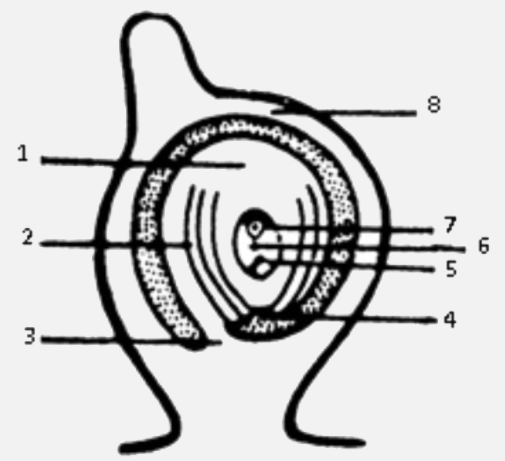
Mark the correct set of numbers which represent the structures that will become:
(i) The future embryo
(ii) The future testa
(iii) The future micropyle region
iiiiii537
iiiiii784
iiiiii637
iiiiii524
The correct Answer is:D
Step by step video & image solution for The diagram below shows a fertilised ovule and carpel . Mark the correct set of numbers which represent the structures that will become: (i) The future embryo (ii) The future testa (iii) The future micropyle region by Biology experts to help you in doubts & scoring excellent marks in Class 12 exams.
Updated on:21/07/2023Similar Questions
The diagram below shows a pulley arrangemnet :
(i) Copy the diagram and mark the direction of tension on each strand of the string.
(ii) What is the velocity ratio of the arrangement ?
(iii) If the tension acting on the string is T, then what is the relationship between T and effort E ?
(iv) If the free end of the string moves through a distance x, find the distance by which the load is raised.
View SolutionThe diagram given below shows a section of a human kidney. Study the diagram carefully and answer the questions that follow:
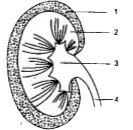
(i) Label the parts numbered 1 to 4.
(ii) Why does part "2" have a striped appearance?
(iii)What is the fluid that passes down part:'4' ? Name the main nitrogenous waste present in it.
(iv) Mention the structural and functional unit of kidneys.
(v) Name the two major steps in the formation of the fluid mentioned
View SolutionThe diagram given below represents the location and structure of an endocrine gland. Study the same and answer the questions that follow:
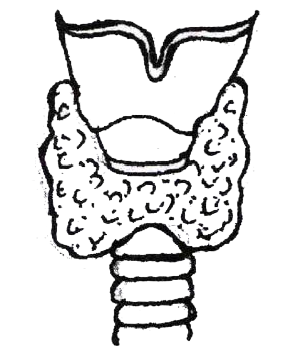
(i) Name the endocrine gland shown in the diagram.
(ii) Name the secretion of the gland which regulates basal metabolism
(iii) Name the mineral element required for the synthesis of the above mentioned hormone.
(iv) Name the disease caused due to undersecretion of the above mentioned hormone in children.
(v) Name the disease caused due to hypersecretion of the above mentioned hormone .
View SolutionThe diagram given below represents a surgical sterilization method in males.
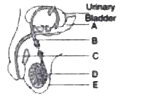
Study the same and answer the questions that follow: (i) Name the parts marked A, B, C, D and E.
(ii) Give the name of the surgical method represented in the diagram.
(iii) Which part is ligated or cut ?
(iv) Name the corresponding surgical method conducted on females.
(V) Name the part which is ligated in females and why?
View SolutionObserve the diagram given below.
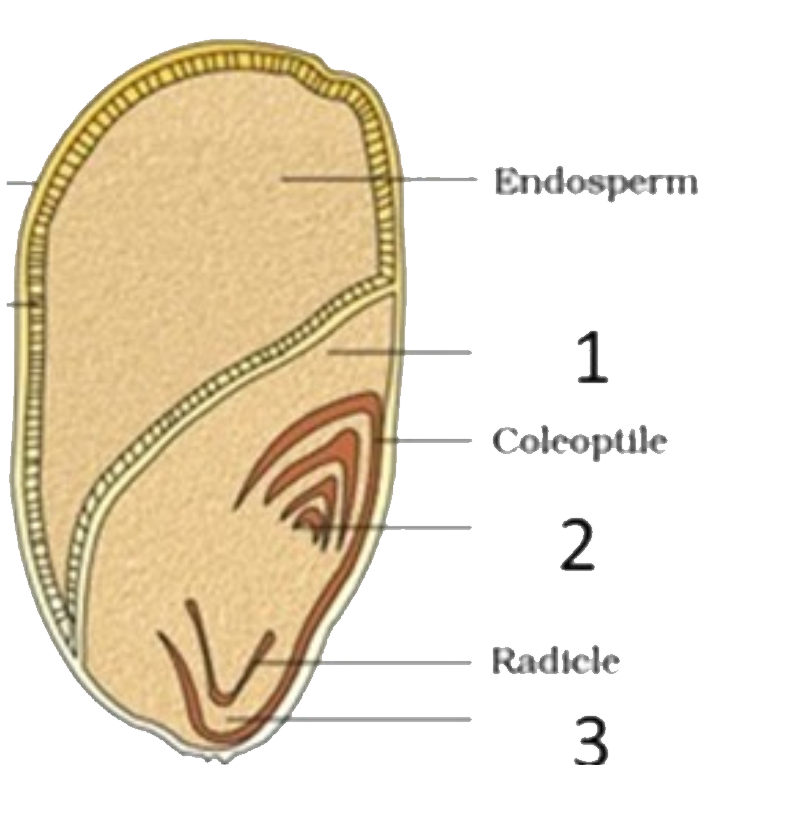
Which of the following describes the parts labeled as 1,2 and 3 correctly ?
i. It represents the plumule which further develops into the shoot .
ii. Large shield shaped cotyledon.
iii. Further develops into the primary root.
View SolutionThe diagram given below is that of a structure present in a human kidney. Study the same and answer the questions that follows :
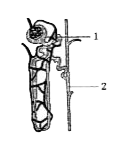
(i) Name the structure represented in the diagram.
(ii) What is the liquid entering part T called? Name two substances present in this liquid that are reabsorbed in the tubule.
(iii) What is the fluid that comes to part '2' called? Name the main nitrogenous waste in it.
(iv) Mention the three main steps involved in the formation of the fluid mentioned in (iii) above.
(v) Name the substance which may be present in the fluid part '11 if a person suffer from diabetes mellitus.
View SolutionThe diagram shown below is the longitudinal section of a testis of man. Study it carefully and answer the questions that follow :
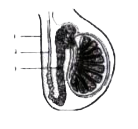
(i) Label the parts numbered 1 to 3 in the diagram.
(ii) In which part of the testis are the sperms ?
(iii) State the functions of the parts labelled 1 and 3 in the diagram.
(iv) Name the cells that secrete Testosterone.
(v) Draw a neat, labelled diagram of a sperm.
View SolutionThe diagram given below is that of a developing human foetus. Study the diagram and then answer the questions that follow :

(i) Label the parts numbered 1 to 3 in the diagram.
(ii) Mention any two functions of the part labelled 2 in the diagram.
(iii) Explain the significance of the part numbered 3 in the diagram.
(iv) Define the term 'Gestation'. What is the normal gestational period of the developing human embryo?
(v) Mention the sex chromosomes in a male and female embryo.
View SolutionThe diagram below shows part of the skeleton of the periodic table ini which elements are indicated by letters which are not their usual symbols.
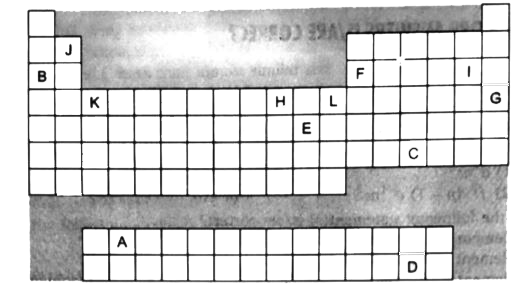
Answer the following on the basis of modern periodic table:
(I) Alkali metal(s)
(II) an elements with the outer configuration of d8s2
(III) Lanthanoids
(IV) Elements with incomplete f-subshell
(VI) Halogen(s)
(VII) s-block element(s)
(VIII) transition element(s)
(IX) Noble gas (s)
(X) Non-transtion element(s)
View SolutionGiven below are diagrams showing the different stages in the process of fertilisation of an egg in the human female reproductive tract.
Study the diagrams and answer the questions
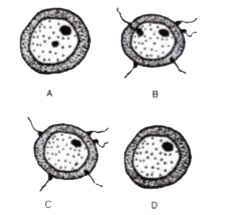
(i) Arrange the letters given below each diagram in a logical sequence to show the correct order in the process of fertilisation.
(ii) Where does fertilisation normally take place? What is 'Implantation' that follows fertilisation ?
(iii) Mention the chromosome number of the egg and zygote in humans.
(iv) Explain the term 'Gestation'. How long does Gestation last in humans ?
(v) Draw a neat, labelled diagram of a mature human sperm.
View Solution
